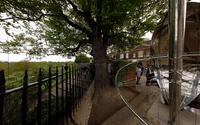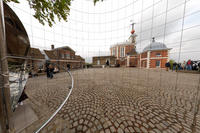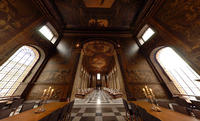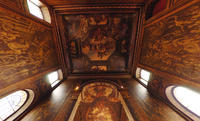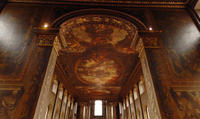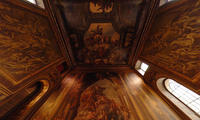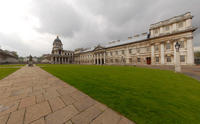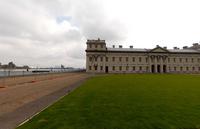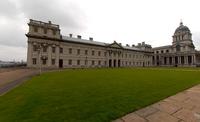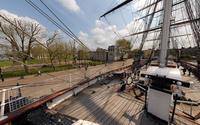You are in: Europe -> United Kingdom. England -> Maritime Greenwich, and traditional search or Image Gallery will yield results of this site only
Maritime Greenwich
| Site number: | 795 |
|
| Type of site: | Cultural | |
| Date: | 17-18th century | |
| Date of Inscription: | 1997 | |
| Location: | Europe, United Kingdom of Great Britain and Northern Ireland, England, London Borough of Greenwich | |
Up to 75 images are shown here. Click on each for more details or on Image Gallery for more images.
| Description: | Greenwich is an outlying district of London, the ensemble of buildings within it, as well as the park in which they are set, represent 17th-18th century English artistic and scientific endeavour. The Queen's House, designed by Inigo Jones, was England’s primary Palladian building. The site’s complex, up until recently known as the Royal Naval College, was designed by Christopher Wren. Laid out on the foundations of André Le Nôtre’s original plan, the Park holds the Old Royal Observatory, the labour of Wren and the scientist Robert Hooke. --WHMNet paraphrase from the description at WHC Site, where additional information is available. For 360 degree imaging of this site, click here. | |
| Greenwich is a town, now part of the south-eastern urban sprawl of London, England, on the south bank of the River Thames in the London Borough of Greenwich. It is best known for its maritime history and as the location of Greenwich Mean Time (0° longitude). Tumuli to the south-west of Flamsteed House, in Greenwich Park, are thought to be early Bronze Age barrows re-used by the Saxons in the 6th century as burial grounds. To the east between the Vanbrugh and Maze Hill Gates is the site of a Roman villa or temple. A small area of red paving tesserae protected by railings marks the spot. It was excavated in 1902 and 300 coins were found dating from the emperors Claudius and Honorius to the 4th century. The Royal Greenwich Observatory is located in Greenwich and the Prime Meridian passes through the building. Greenwich Mean Time was at one time based on the time observations made at the Royal Greenwich Observatory, before being superseded by Coordinated Universal Time. While Greenwich no longer hosts a working astronomical observatory, a ball still drops daily to mark the exact moment of 1 pm (13:00), and there is a museum of astronomical and navigational tools, particularly John Harrison's marine chronometers. The observatory is situated in Greenwich Park, which used to be the grounds of the Royal Palace of Placentia. At the bottom of the park is the National Maritime Museum which also includes the Queen's House, designed by Inigo Jones. The O2(formerly the Millennium Dome) was built on a disused British Gas site on the Greenwich Peninsula. It is next to North Greenwich tube station, about three miles east from the Greenwich town centre, northwest of Charlton. The Greenwich Millennium Village is a new urban regeneration development to the south of the Dome. East Greenwich has a small park, East Greenwich Pleasaunce, which was formerly the burial ground of Greenwich Hospital. The town centre features Greenwich Market, a covered market popular with tourists at the weekends. The owners, Greenwich Hospital are undertaking public consultation to consider ideas to regenerate the site whilst retaining the Market. In 1997, maritime Greenwich was added to the list of World Heritage Sites. In recognition of the suburb's astronomical links, Asteroid 2830 has been named 'Greenwich'. --Wikipedia. Text is available under the Creative Commons Attribution-ShareAlike License. For 360 degree imaging of this site, click here. | ||
| Source: | http://whc.unesco.org/en/list/795 | |
| Source2: | http://whc.unesco.org/en/list/795/video | |
| Reference: | 1. UNESCO World Heritage Center, Site Page. | |






